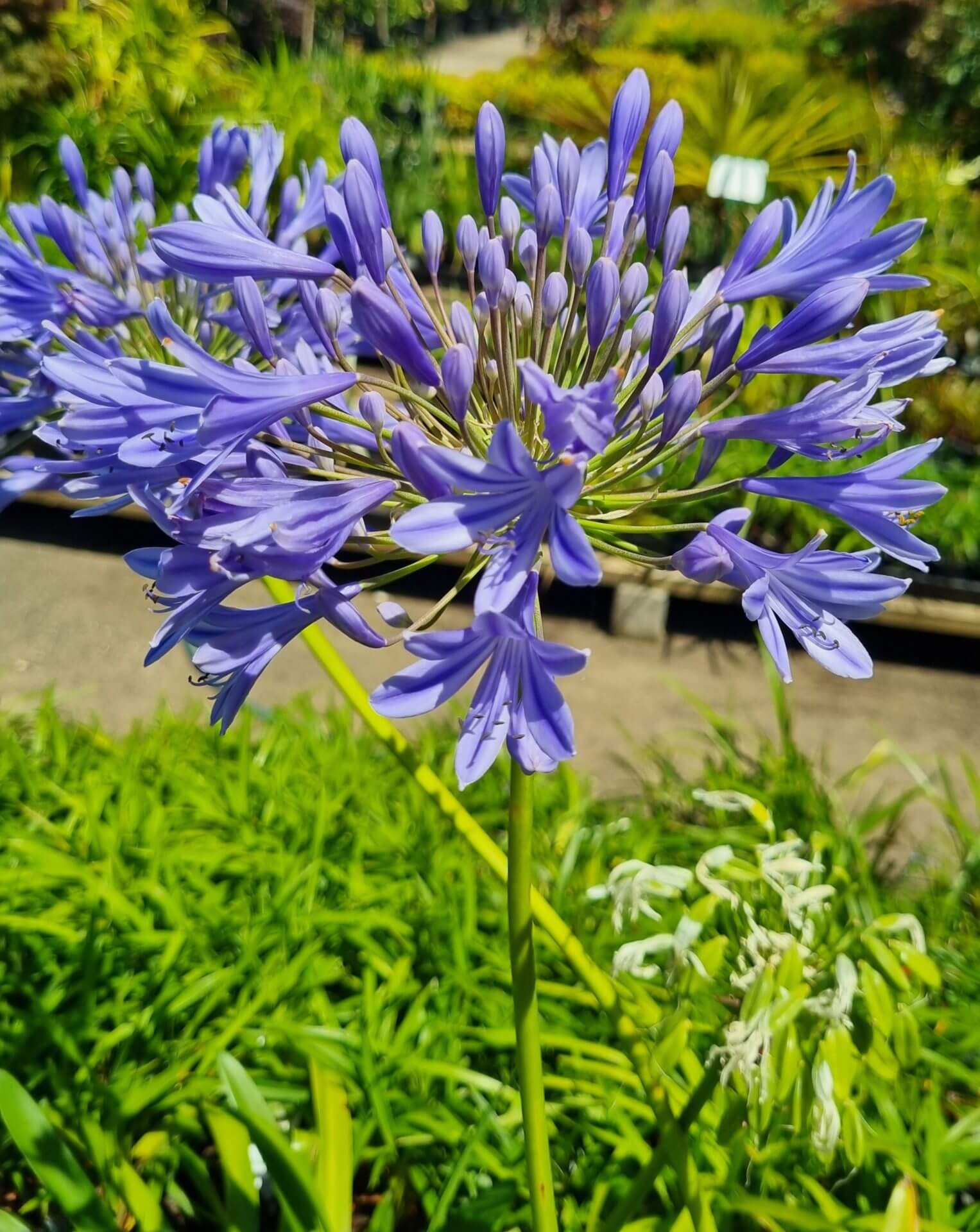Agapanthus Expanding Conditions: Dirt, Sunshine, and Watering
Agapanthus Expanding Conditions: Dirt, Sunshine, and Watering
Blog Article
Mastering the Art of Agapanthus Treatment: Essential Steps for Healthy Growth and Dynamic Blooms
In the world of cultivation, the cultivation of agapanthus stands as a gratifying endeavor for those that seek to nurture these elegant blooming plants. From choosing the right range to mastering pruning techniques, the journey towards growing thriving agapanthus plants is diverse and holds the crucial to unlocking the full possibility of these organic gems.
:strip_icc()/agapanthus-africanus-b959396b-5696f86e059c46f299d1834ba687c6eb.jpg)
Selecting the Right Agapanthus Range

When selecting the best Agapanthus variety for your garden, think about elements such as climate suitability, bloom color, and development behavior. Furthermore, consider the climate in your region to make certain the Agapanthus variety you pick can thrive in your specific conditions. Comprehending the growth practice of different Agapanthus varieties is essential for correct placement within your garden.
Ideal Planting Conditions
Considering the ideal ecological needs is vital for successful Agapanthus growing. Agapanthus plants are sensitive to cool temperatures and ought to be shielded from frost throughout winter season months.
To make sure healthy and balanced growth and lively blossoms, plant Agapanthus bulbs at a deepness of about 2-4 inches and space them 8-12 inches apart. Mulching around the base of the plants helps keep moisture and subdues weed development.
Watering and Fertilizing Tips
Preserving proper wetness levels and giving important nutrients are key elements in the treatment routine for Agapanthus plants. When it comes to sprinkling Agapanthus, it is essential to strike an equilibrium. These plants choose consistently moist soil yet are susceptible to root rot if overwatered. During the expanding period, water deeply when a week, making sure the soil is well-draining to stop waterlogging. In hotter climates or throughout periods of dry spell, more regular watering may be necessary to keep the soil uniformly wet. However, minimize watering in the winter months to stop waterlogged conditions.
Fertilizing Agapanthus is necessary for promoting healthy and balanced development and prolific flowers. Apply a well balanced fertilizer, such as a 10-10-10 formula, in the very early spring as brand-new development arises. Repeat this application every 6-8 weeks throughout the expanding period. Prevent extreme fertilizing, as it can lead to rich foliage at the expense of flowers. Constantly follow the producer's directions for proper dilution and application methods. By complying with these watering and feeding tips, you can ensure your Agapanthus plants grow and create lively, long-lasting blossoms.
Trimming Strategies for Agapanthus
Trimming Agapanthus plants at the appropriate times and with appropriate strategies is vital for maintaining their wellness and promoting optimum growth and blooming. The excellent time to trim Agapanthus is in late wintertime or early springtime before brand-new growth arises.
For flowered stems, wait up until the blossoms have actually perished and after that cut them back to the base. This not only cleans up the plant's look yet likewise urges the growth of see this here new blossom buds. Deadheading spent flowers can also reroute the plant's energy into generating even more flowers rather than establishing seeds. Nevertheless, if you wish to collect seeds for propagation, leave some flowers to fully grown and dry on the plant.
Bear in mind to make use of tidy, sharp devices to make precise cuts and minimize the risk of introducing diseases. Agapanthus. Normal pruning will help keep your Agapanthus looking cool and healthy and balanced while making certain a plentiful display of beautiful blossoms
Handling Common Insects and Diseases
After making sure proper trimming methods for Agapanthus, it is important to attend to common insects and illness that can influence the health and vigor of these plants. Agapanthus plants are next normally hardy but can still succumb particular problems. One common bug that affects Agapanthus is the Agapanthus gall midget. This little, orange fly lays its eggs in the vegetation, bring about altered development and flower buds that fail to open up. To combat this pest, trim and destroy any type of afflicted plant parts and consider utilizing insecticidal soap.
An additional common problem is fungal leaf spot, which offers as dark lesions on the leaves. To avoid fungal illness, ensure excellent air circulation around the plants, avoid overhead watering, and get rid of any contaminated fallen leaves immediately. In addition, Agapanthus plants can suffer from root rot if they are grown i loved this in poorly draining dirt. To stop this, plant Agapanthus in well-draining dirt and prevent overwatering. By being alert and taking punctual action against conditions and pests, you can assist your Agapanthus plants flourish and generate vibrant flowers.

Final Thought
In final thought, mastering the art of agapanthus treatment includes picking the appropriate range, supplying excellent planting conditions, proper watering and feeding, suitable pruning techniques, and resolving common parasites and conditions. By following these essential actions, you can ensure healthy growth and vibrant flowers for your agapanthus plants. Bear in mind to on a regular basis keep an eye on and keep your plants to promote their total health and longevity.
To make sure healthy and balanced growth and lively blossoms, plant Agapanthus light bulbs at a deepness of about 2-4 inches and room them 8-12 inches apart. By adhering to these watering and fertilizing pointers, you can guarantee your Agapanthus plants prosper and generate dynamic, resilient blooms.
One common bug that affects Agapanthus is the Agapanthus gall midge. Furthermore, Agapanthus plants can suffer from root rot if they are planted in poorly draining soil. By following these necessary steps, you can make sure healthy and balanced development and vibrant blooms for your agapanthus plants.
Report this page